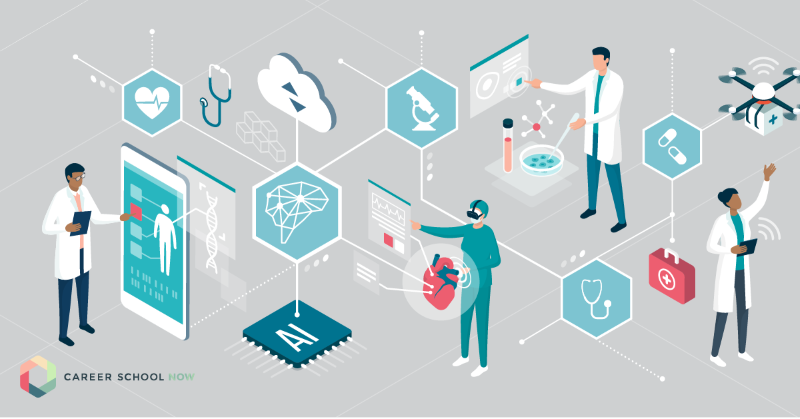Exactly How to Boost Effectiveness in Medical Administration with Modern Tools
Exactly How to Boost Effectiveness in Medical Administration with Modern Tools
Blog Article
Ideal Practices in Medical Management for Improving Efficiency and Decreasing Costs
In the ever-evolving landscape of health care, the quest of best methods in clinical administration is vital for enhancing performance and suppressing costs. By incorporating sophisticated technologies such as digital health and wellness documents and telemedicine, doctor can enhance operations and improve individual care. Modern technology alone is not a cure all; maximizing source allocation and cultivating collective interaction amongst treatment groups are equally crucial. As organizations strive to stabilize top quality and price, what approaches should be focused on to achieve these twin goals? The solution to these inquiries hold the key to a more sustainable healthcare system.
Leveraging Advanced Modern Technology
In today's quickly developing healthcare landscape, leveraging advanced modern technology is no longer optional but crucial for efficient medical administration. The assimilation of electronic solutions into medical care systems has actually transformed the method centers run, streamlining procedures and enhancing individual care. Electronic Health And Wellness Records (EHRs) are crucial, giving comprehensive person information that can be accessed instantaneously by authorized personnel, thus decreasing redundancy and reducing mistakes. By systematizing client details, EHRs eliminate the requirement for cumbersome documents and help with smooth interaction amongst medical care companies.
Telemedicine is an additional technological innovation that has actually changed client interaction. It provides comfort for both people and health care professionals by allowing remote appointments, which can minimize the demand for in-person visits and enhance appointment scheduling. In addition, telehealth platforms can extend health care accessibility to rural or underserved areas, connecting gaps in treatment distribution.
In addition, the usage of Expert system (AI) and maker learning is ending up being significantly common in anticipating analytics, permitting very early detection of prospective health concerns and more informed decision-making. These technologies, when integrated properly, can boost diagnostic accuracy and customize patient treatment strategies, inevitably bring about boosted health care outcomes and operational effectiveness.
Optimizing Source Appropriation
Reliable source appropriation is important for making the most of the efficiency of medical administration. By purposefully handling resources such as workers, devices, and financial resources, healthcare centers can dramatically enhance their operational performance, enhance client results, and lower unneeded expenses. The primary step in optimizing source allotment includes performing a thorough assessment of current possessions and recognizing locations where resources might be underutilized or exhausted. This assessment must be data-driven, using metrics and analytics to educate decision-making procedures.
Focusing on resource appropriation based on patient needs and service demands is important. Executing adaptable staffing models can likewise enhance labor resources by changing employees allotment in reaction to fluctuating patient quantities.
Funds must be diligently monitored and designated with tactical foresight to sustain both short-term functional demands and long-term institutional objectives. This consists of investing in training programs that improve team expertises and adopting energy-efficient methods that decrease operational prices (medical administration). Eventually, a maximized source appropriation strategy fosters a lasting healthcare environment that is receptive, effective, and monetarily sensible
Streamlining Operations Processes
When medical care facilities goal to boost functional efficiency, enhancing operations processes comes to be a critical focus. Efficient operations minimize redundancy, eliminate unneeded actions, and improve review sychronisation among medical care specialists. This technique not only increases service delivery yet likewise enhances the quality of person care.

Next, technology combination plays a substantial function in streamlining workflows. Implementing digital wellness documents (EHRs) and electronic medical professional order access (CPOE) systems minimizes paperwork, decreases human mistake, and makes sure information is available to all pertinent workers. Furthermore, leveraging telemedicine platforms can improve client examinations and follow-ups, reducing the stress on physical framework.

Inevitably, streamlined operations lead to set you back decreases and boosted individual fulfillment, fostering a more sustainable health care environment.
Enhancing Information Monitoring
Building upon structured process, maximizing information administration ends up being an essential component beforehand health care management. Effective data monitoring systems are important for keeping exact patient records, improving decision-making, and making sure compliance with regulatory requirements. By implementing durable information administration solutions, medical care centers resource can boost the top quality of patient care while concurrently minimizing operational costs.
One trick aspect of improving information monitoring is the assimilation of sophisticated electronic health record (EHR) systems. These systems help with the seamless exchange of client details throughout various divisions, minimizing replication of examinations and reducing mistakes. A properly designed EHR system supports data analytics, allowing healthcare service providers to identify fads and make educated decisions pertaining to patient treatment.
Additionally, guarding person data is extremely important. Embracing extensive cybersecurity procedures, including security and regular audits, guarantees the stability and discretion of delicate information. This not only safeguards patients yet likewise maintains the institution's credibility.
Spending visit site in team training is an additional crucial element. Educating medical care specialists on data management methods boosts their ability to properly use modern technology, leading to improved person outcomes. In conclusion, improving information monitoring via sophisticated innovation and comprehensive training is vital for achieving performance and expense reduction in clinical management.
Fostering Collaborative Interaction
A vital part beforehand medical administration is fostering collaborative interaction among healthcare specialists. Reliable communication is vital for ensuring seamless client care, enhancing therapy results, and minimizing errors. By encouraging open dialogue and coordination across multidisciplinary groups, healthcare organizations can enhance their functional efficiency and reduce unneeded expenses.
Central to this method is the integration of interaction modern technologies such as electronic wellness documents (EHRs) and secure messaging platforms, which help with the rapid exchange of critical patient information. These tools make it possible for doctor to gain access to and share data in real time, ensuring that all staff member are educated and lined up in their decision-making processes. Routine group meetings and interdisciplinary rounds can further advertise a culture of collaboration and liability.
Training programs focused on improving communication abilities are also crucial. Inevitably, promoting collaborative communication leads to enhanced healthcare shipment and expense financial savings.

Final Thought
Incorporating innovative innovation, such as electronic wellness records and telemedicine, along with enhanced resource allocation and structured workflow procedures, is essential for boosting effectiveness in clinical administration. Efficient information management and promoting collective communication among medical care groups are vital for minimizing redundancies and enhancing treatment quality. By focusing on precautionary care and taking part in top quality enhancement initiatives, healthcare companies can accomplish considerable expense financial savings and improved individual end results, thus making sure sustainable health care shipment in a significantly complicated environment.
Report this page